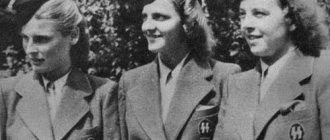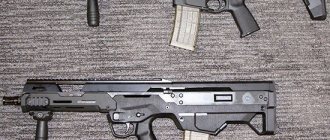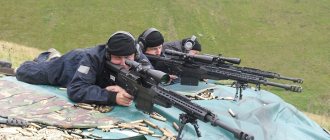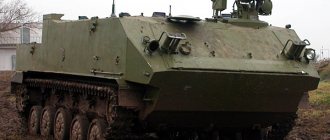Dry soldering requirements
A modern dry ration must meet the following requirements:
- Everything included in IRP-1 must have a long shelf life. Fresh products cannot be included in it.
- All products should be easy to prepare or ready to eat.
- Products should not contain allergic components, and should also be easily digestible without causing gastrointestinal disorders.
- The packaging of dry rations must be made of such material that it does not get wet or become dirty.
- The ration must be energetically valuable.
Officials
Commanders must take care of the health of their subordinates, its preservation and strengthening, and the necessary provision. The deputy commander for political affairs takes care of food, and the deputy commander for logistics organizes good nutrition for the personnel, as well as ensures that food is supplied to all those serving in military service on conscription (and in some cases under contract). The food supply manager manages the work of the bakery, warehouse, kitchen, canteen and utility room. The chief medical service participates in the development of nutrition, controls its organization, quality and sanitary condition of services.
Prohibited foods
IRP-1 contains only those components that do not require long preparation and do not deteriorate over a long period of time. The following are not used to complete it:
- Products that quickly deteriorate, as well as those that require special storage conditions.
- Foods with hot spices, alcohol, caffeine, apricot kernels, cooking fats and other harmful ingredients.
- Unwashed fruits and vegetables that quickly spoil, including exotic ones.
- Products for which there is no documented evidence of their safety and quality.
Recommendations for use
To prepare boiling water or reheat food, you need to use a portable heater. Usually this is dry fuel in tablets (three pieces). To do this, the grater, Taganka and packaging with tablets are disconnected, the wind deflectors of the Taganka are bent ninety degrees in the direction where there are recesses for dry fuel. They take out a tablet, ignite it on a grater and put it inside the taganka, over which they place a mug of water or canned food. After heating is completed, the heater is folded into its original position. Matches are used to light other fuels. A product intended for water disinfection (Aquabreeze tablet) is dipped into a container of water, shaken and allowed to stand for about thirty minutes. One tablet is suitable for one liter of water. Multivitamins, which are in the form of pills, are used during breakfast. It is recommended to eat meat with vegetables for breakfast or lunch.
Reviews, or why ordinary people buy dry rations
Based on numerous surveys of ordinary people who use dry rations for their needs, it became clear that the IRP is quite convenient to use. There are several reasons why ordinary people buy dry rations:
- There is no need to waste time searching for the necessary products in stores and on the market. Everything you need is already contained in one package of dry rations.
- The rations have a long shelf life, which is very beneficial.
- IRP can withstand temperature changes and does not deteriorate even at temperatures of thirty-five degrees Celsius.
- They have a high calorie content and do not contain any components harmful to health (dyes, flavors and other additives).
- Relatively low price, which is consistent with the quality of the products.
Compound
IRP-1 includes the following products: four packages of wheat bread, one can of canned Slavic porridge with beef, one can of vegetable stew with meat, one can of natural beef, chopped pepper, chocolate paste; concentrate for preparing the drink, condensed milk, one fruit stick with plum filling, three bags of sugar, salt and pepper, three bags of black tea. In addition to all this, the IRP-1 includes: multivitamins, a portable heater, matches, paper and disinfectant napkins, a plastic spoon, a can opener, and a water purifier.
What do the army eat for dinner?
- Mashed potatoes, stewed cabbage, buckwheat and other side dishes;
- Chicken, fried fish (navaga, flounder, cod, pollock), meatballs;
- Canned green peas, corn;
- Bread and butter;
- Tea.
Sometimes in the army, soldiers are given dumplings with sour cream, pilaf with pieces of meat or chicken, and on holidays they prepare appropriate dishes, for example, on Easter - Easter cake, and on May 9 and New Year they give sweets and fruits (tangerines), on Maslenitsa - pancakes with sour cream and condensed milk, but this is rather an exception.
In some units, with the loyal attitude of the leadership, the soldiers themselves prepare the festive table for the New Year and May 9, order pies from the chefs, and in the kitchen they themselves cook potatoes and chicken and chop salads.
In military units there are small food stores or stalls where soldiers can buy baked goods, sweets, and cigarettes.
Naturally, food rations for different types of troops are slightly different, for example, soldiers serving on submarines are given more cottage cheese, herring, balyk, condensed milk, more coffee, and tomato juice. In the summer, recruits eat more chicken meat, vegetables and fruits, chocolate and milk, cottage cheese and sour cream.
Of course, a lot depends on the military unit, command and branch of the army in which the conscript will serve. Most of the guys who served longingly remember their army lunches and dinners, where they were fed daily barley and millet, which was difficult to tear off the plate, empty cabbage, and something like coffee.
Recently, more and more units are switching to the so-called “buffet”, where the serviceman is given a choice of first, second and third courses. According to the Minister of Defense of the Russian Federation, the total energy value of the daily ration of a Russian soldier today is 4300 kcal.
But in fact, this is the maximum food energy value, which is not always possible to use up even taking into account all the physical activity. Therefore, some soldiers note that during their service they not only did not lose weight, but gained excess weight.
The food system in Russia will undoubtedly continue to undergo various changes, hopefully for the better...
Read in our articles what a conscript needs to take into the army, and what diseases are not accepted into the army.
(738, today: 1)
Consumers
IRP-1 is mainly issued to people who are military personnel. But they are important not only for this category of people; dry rations are also well suited for tourists, geologists, fishermen and hunters, and security forces. IRP can also be issued to workers who work on a rotational basis, to the crew of aircraft that make long flights, submarines, ships, rescuers, and various humanitarian organizations. In general, this is an indispensable product for all those who need backup power that does not require special storage conditions, is lightweight and has a long service life.
France
A standard one and a half kilogram package is designed for a day; there are a dozen different sets to choose from with an average energy value of about 3500-4000 kilocalories. In addition to the usual products, such as biscuits and water-soluble drinks, there is duck pie, Italian pasta salad with herbs and pork in sauce, Camembert. Are you jealous? And that's not all: rabbit casserole, paella, Creole pork and salmon pate. To ensure that Monsieur always remains Monsieur, the ration includes a pack of dry and wet wipes.
Control measures
The main goals in this regard are aimed at guaranteeing high-quality food that is adequate to the working conditions of employees, while hygienic and epidemiological control is carried out. In the first case, the doctor participates in the process of setting a diet, choosing products, monitoring proper transportation, the sanitary condition of enterprises, the quality of products, and so on. In the second case, measures are aimed at preventing food poisoning, then medical control is carried out over employees of the kitchen and warehouses, in the canteen and other enterprises related to the nutrition of employees.
The food is prepared after the food has been laid out. This procedure allows you to correctly distribute food for each person per day. It is usually prepared for the week by the food supply manager and also by the doctor. The document is signed by the deputy for the rear and the head of the medical service, and approved by the commander of the military unit.











